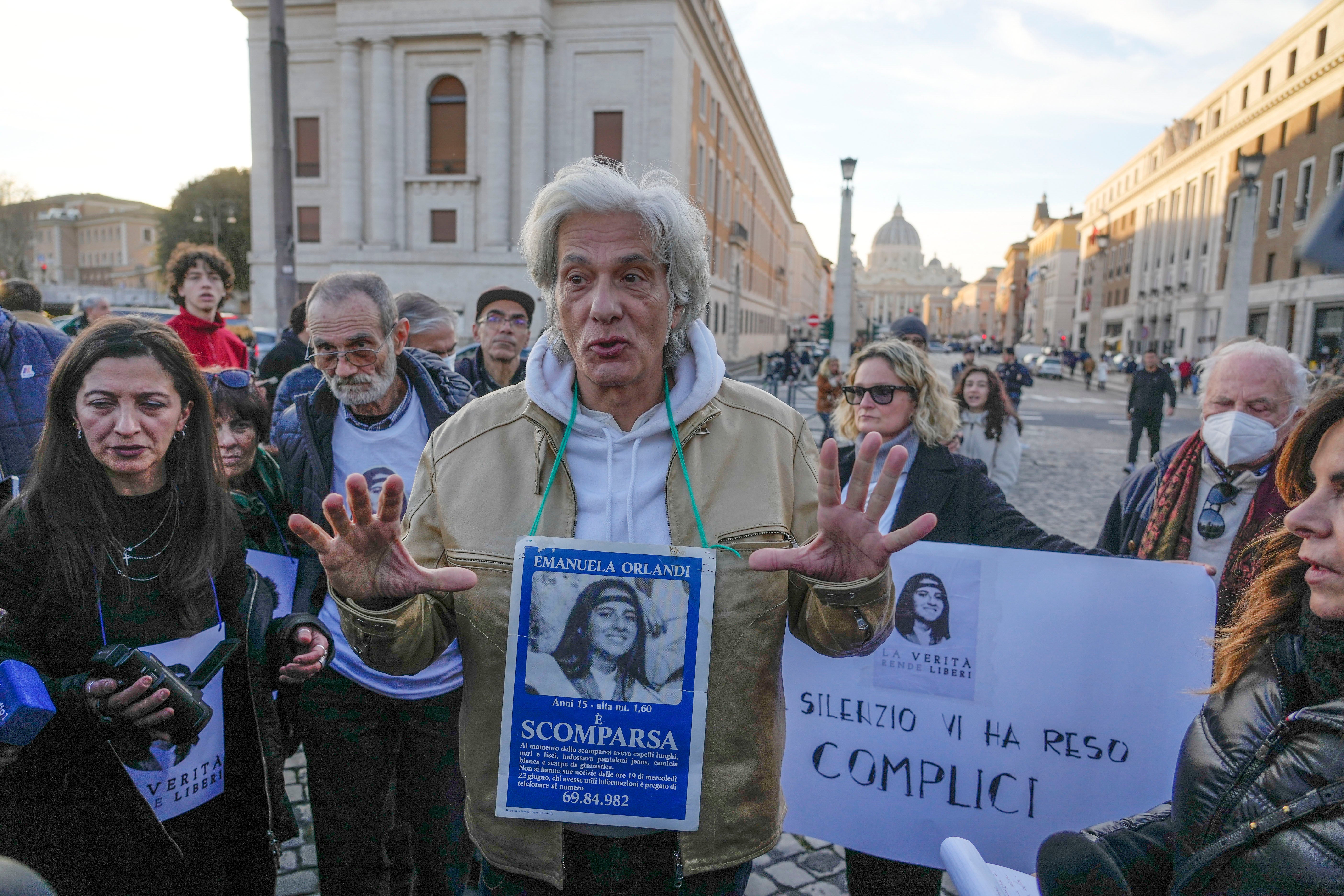Vatican says new leads are worth pursuing in the disappearance of employee's daughter 40 years ago
Exactly 40 years after the teenage daughter of a Vatican employee disappeared, the Vatican announced new leads “worthy of further investigation” have surfaced

Your support helps us to tell the story
From reproductive rights to climate change to Big Tech, The Independent is on the ground when the story is developing. Whether it's investigating the financials of Elon Musk's pro-Trump PAC or producing our latest documentary, 'The A Word', which shines a light on the American women fighting for reproductive rights, we know how important it is to parse out the facts from the messaging.
At such a critical moment in US history, we need reporters on the ground. Your donation allows us to keep sending journalists to speak to both sides of the story.
The Independent is trusted by Americans across the entire political spectrum. And unlike many other quality news outlets, we choose not to lock Americans out of our reporting and analysis with paywalls. We believe quality journalism should be available to everyone, paid for by those who can afford it.
Your support makes all the difference.Exactly 40 years after the teenage daughter of a Vatican employee disappeared, the Vatican said Thursday that new leads “worthy of further investigation” had surfaced hopes of finally getting to the bottom of one of the Holy See’s enduring mysteries.
Emanuela Orlandi vanished June 22, 1983, after leaving her family’s Vatican City apartment to go to a music lesson in Rome. Her father was a lay employee of the Holy See. Over the years, her disappearance has been linked to everything from the plot to kill St. John Paul II, a financial scandal involving the Vatican bank and Rome’s criminal underworld.
The Vatican's criminal prosecutor, Alessandro Diddi, said Thursday he had recently forwarded to prosecutors in Rome all the relevant evidence he had gathered in the six months since he reopened the investigation into Orlandi's disappearance. In a statement, he vowed to keep pursuing the case.
Popular interest in the case was renewed last year with the four-part Netflix documentary “Vatican Girl,” which explored the various scenarios suspected in her disappearance and also provided new testimony from a friend who said Orlandi had told her a week before she disappeared that a high-ranking Vatican cleric had made sexual advances toward her.
After the documentary aired and with the 40th anniversary of her disappearance nearing, Orlandi’s family — backed by some lawmakers — pressed for an Italian parliamentary commission of inquiry. Separately, the Vatican and Rome prosecutor’s offices reopened the investigation.
Rome's previous chief prosecutor who archived the case within the Italian legal system, Giuseppe Pignatone, is now the chief judge of the Vatican’s criminal tribunal, where Diddi is the chief prosecutor.
In the statement, Diddi said his office had collected “all the evidence available in the structures of the Vatican and the Holy See.”
He said his office had also interrogated people who held Vatican positions 40 years ago.
“It has proceeded to examine the material, confirming some investigative leads worthy of further investigation and transmitting all the relevant documentation, in recent weeks, to the Prosecutor’s Office in Rome, so that the latter may take a look at it and proceed in the direction it deems most appropriate,” the statement said.
He expressed solidarity with the Orlandi family.
Pietro Orlandi, who has fought for 40 years to find the truth about his sister, is planning a sit-in protest Sunday near the Vatican. He has long charged that the Vatican has never come clean with what it knows about the case.